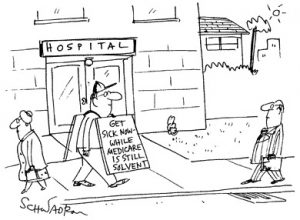The State of Digital Pathology Today – Part 3
Earlier this year I started a now 3-part series on the “State of Digital Pathology Today” with part 1 in January and part 2 in February.
Since that time many changes have and are taking place in both the pathology market as a whole and with digital pathology in particular.
 First, issues of reimbursement and appropriate use of immunohistochemical stains, special stains and the promise of genomic medicine has had an already profound impact on the laboratory market as a whole.
First, issues of reimbursement and appropriate use of immunohistochemical stains, special stains and the promise of genomic medicine has had an already profound impact on the laboratory market as a whole.
In case you missed it, there is an excellent post at The Pathology Blawg on issues concerning Medicare defining fraudulent use of inappropriate stains on gastric and breast biopsies as a start. The matter re-visits an issue I raised about 6 years ago on the matter of “routine” and in my opinion, unnecessary stains in GI biopsies. There is some excellent commentary on the post (warning – some comments not G-rated) that is worth looking at.
The issue at stake is essentially the ability of pathologists to self-refer, regardless of practice location, the use of additional tests and/or stains, which has been under some scrutiny and has reached the level of Medicare contractors looking at the matter more closely.
More on re-visiting this issue with recent news in an upcoming post.
Nonetheless, with reimbursements for technical services cut by more than 50% for biopsies, the most common anatomic pathology test and cuts of up to 70% for immunohistochemical tests, long a source of revenue for laboratories and pathologists, ordered by a pathologist and uncertainty surrounding capital costs and expense and clear cut reimbursement metrics for molecular pathology, many laboratories and pathologists find themselves in unchartered waters.
In fact, the recent American Pathology Foundation 2014 Spring Conference was entitled “Weathering the Storms in Pathology: Thrive, Dive or Just Survive”. Within the past couple of months, DarkDaily.com has run stories on “Leaders at the Association for Pathology Informatics Conference Issue Broad Call to Action in Response to Clinical and Financial Threats to Pathology Profession”, “Clinical Laboratory Executives and Pathologists Gathered in New Orleans This Week to Learn New Financial Strategies to Cope with Shrinking Lab Test Prices”, “Facing the Looming End of Fee-for-Service, Clinical Laboratories and Anatomic Pathology Groups Look for New Business Models” and “New Federal Law Has Potential to Financially Devastate Local Clinical Laboratories, While Favoring Larger National Medical Labs”.
Message boards and listservs are complete with titled posts about “Future looking more grim by the day for the lab industry” and “Flee while you can”.
Since the inception of whole slide imaging more than a decade ago with commercially available systems on the market, no one was able to come up with “The Killer App” for digital pathology. If you, your colleagues and/or consultants/experts and histology laboratory where in one place and you happened to have a whole slide scanner, chances are the technology was used for “interesting case” archives, tumor boards, teaching and perhaps some research applications. Little, if any, clinical utility, tied to a business model that would generate revenue and make the case for digital pathology. Not to say there isn’t value in digital conferences, tumor boards and digital data sets of interesting cases, it’s just that those are not revenue generators like other laboratory equipment in production running tests with associated billable codes and defined reimbursement.
Today, as mentioned previously here, for a number of years, pathologists are increasingly doing more for less. Associated costs increasing with running a lab with unfavorable reimbursements for typically high volume/high margin work has changed the ways pathologists have to run their businesses.
Increasingly, laboratory consolidation of technical services is becoming more prominent, whether through mergers, acquisitions or partnerships among several labs. In an effort to maximize efficiency, laboratories and pathology groups are increasingly combining in some way, shape or form to leverage existing resources to survive and thrive. The traditional growth models of acquiring more work and more pathologists over time are no longer valid.
This has created the perfect storm, as it where, for digital pathology. More work for less has driven many to look at solutions they may have passed on investigating or implementing in the past, including digital pathology. Consolidation and working faster, cheaper, more accurately and more efficiently rather is the new model.
 The killer app for digital pathology is being created by market forces that are changing the traditional practice and clinical business practices of pathology groups. Increasingly, consolidation of technical services with decentralized pathology services, has created a market for digital pathology – all components of the workflow – hardware, software, informatics, LIS interfaces and reporting.
The killer app for digital pathology is being created by market forces that are changing the traditional practice and clinical business practices of pathology groups. Increasingly, consolidation of technical services with decentralized pathology services, has created a market for digital pathology – all components of the workflow – hardware, software, informatics, LIS interfaces and reporting.
Add to this accountable care organizations, larger and larger integrated health care delivery systems/networks and pay-for-performance rather than fee-for-service models.
One of many solutions pathology groups and laboratories will need in the very near future to meet their needs and the needs of their patients/clients/customers/partners is digital pathology.
The state of digital pathology today is strong!

































